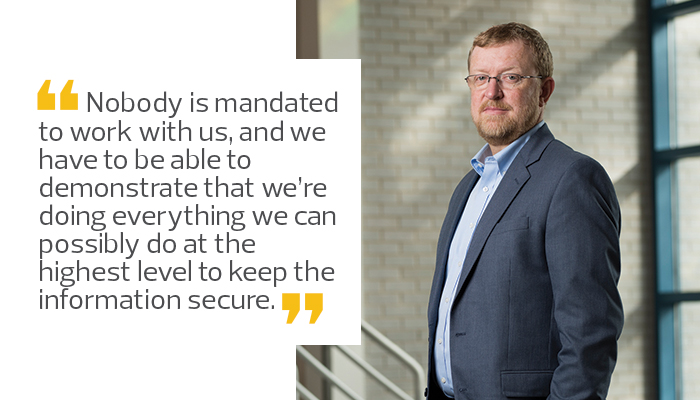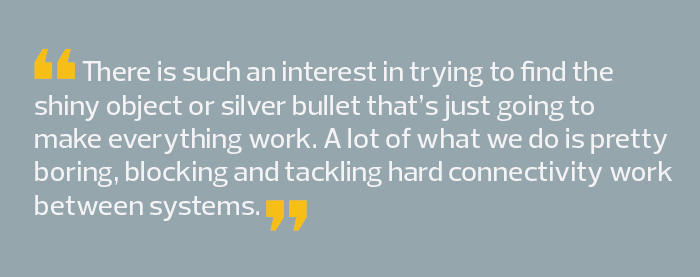Q&A: Great Lakes Health’s Doug Dietzman Touts Data Sharing in Times of Crisis
The flow of information in a safe, secure and efficient manner is paramount to the delivery of high-quality healthcare. Grand Rapids, Mich.-based Great Lakes Health Connect (a health information exchange, or HIE, that counts 129 hospitals across the state as participants) offers tools and services to help healthcare organizations connect and share data for both everyday patient care and broader population health efforts.
“We want to make sure that when we as individuals move from place to place, from a healthcare standpoint, our data can follow us wherever we go,” says Doug Dietzman, executive director for GLHC, which currently holds information for 9.8 million people in its master person index.
HealthTech spoke to Dietzman about data security and storage, GLHC’s biggest challenges, the benefits of HIEs, and the organization’s ongoing efforts focusing on the opioid crisis and clean water.
SIGN UP: Get more news from the HealthTech newsletter in your inbox every two weeks!
HEALTHTECH: How are you ensuring the privacy and safety of patient data?
Really focusing on HITRUST [Health Information Trust Alliance] certification has been big for us to show our partners that privacy is top of mind for GLHC. We conduct quarterly internal security assessments. We also have our corporate and administrative domain completely separate from our healthcare domain, so if something happens on the corporate side, a hacker can’t leak over and gain access into the clinical side of the house.
We’re also focused on deployment of electronic safeguards like firewalls, data encryption and monitoring solutions. Nobody is mandated to work with us, and we have to be able to demonstrate that we’re doing everything we can possibly do at the highest level to keep the information secure.
HEALTHTECH: Can you speak about the tools that enable data exchange with so many partners?
From a storage standpoint, we use Dell EMC solutions. We run on a virtual server environment with Cisco UCS.
We work out of two colocated data centers, and our health connect platform is highly available between them; if it goes down, it’s immediately picked back up. We used a lot of Cisco networking solutions to build that out. We intentionally built the infrastructure incrementally, so we won’t have to do a big “rip and replace” in the future. We can continue to just add on other pieces as necessary.
HEALTHTECH: You recently announced a collaboration with the University of Michigan focused on the opioid crisis. What is GLHC’s role in the effort?
A lot of the information that’s been used to try and define where there are hot spots — where there are issues — tends to be very dated, back-end claim data or other data that has been sitting around for a while. What the university is trying to do with this project is to review more real-time data.

Photography by Logan Zillmer
What we provide specifically is connections to many of the hospitals throughout the state. We’ve got the admissions, discharge, transfer and encounter data that’s coming out, so we’re enriching that. We’re looking for specific diagnosis codes and other information that would suggest that something is related to an opioid event, and then we’re delivering that transformed data into the University of Michigan Acute Care Research Unit’s repository, and also helping them with other data they receive.
HEALTHTECH: In 2016, GLHC committed $250,000 to connect all healthcare providers in Genesee County in response to the lead contamination of drinking water in Flint. What’s being done to continue to support those impacted by the water crisis?
A core part of our investment was to hire somebody from Flint to be on the ground to help us drive things. That person continues to work there and focus on the community. The other core part was to pay electronic health record interface costs to vendors. We’ve done dozens of those with more than 100 organizations in that region.
We’re also developing and delivering reports on a regular basis that show who visited the emergency room multiple times in the previous month, then working with providers, Medicaid health plans and others through the Greater Flint Health Coalition to try to figure out how to intervene with those patients.
HEALTHTECH: What are the biggest challenges on a day-to-day basis?
One of the main challenges is trying to keep up with the changes in this industry from technical, regulatory and business standpoints. Another is managing through hype.

There is such an interest in trying to find the shiny object or silver bullet that’s just going to make everything work. A lot of what we do is pretty boring, blocking and tackling hard connectivity work between systems, and sometimes I think that gets lost a little bit in the idea that we have standards now and so it should just all work.
HEALTHTECH: Can you speak to the importance of HIEs in connecting disparate organizations during crisis situations, such as natural disasters?
The use of HIEs should really be baked into emergency plans. We plan stockpiling beds, medications, gauze, but we often don’t think ahead when preparing for emergencies about the need to stockpile data.
If and when people in our communities get spread to the wind, or even sent to other states, there is an ability to be able to have that data ready to follow them, and care for them.
Our approach is getting the data to the right place at the right time.









